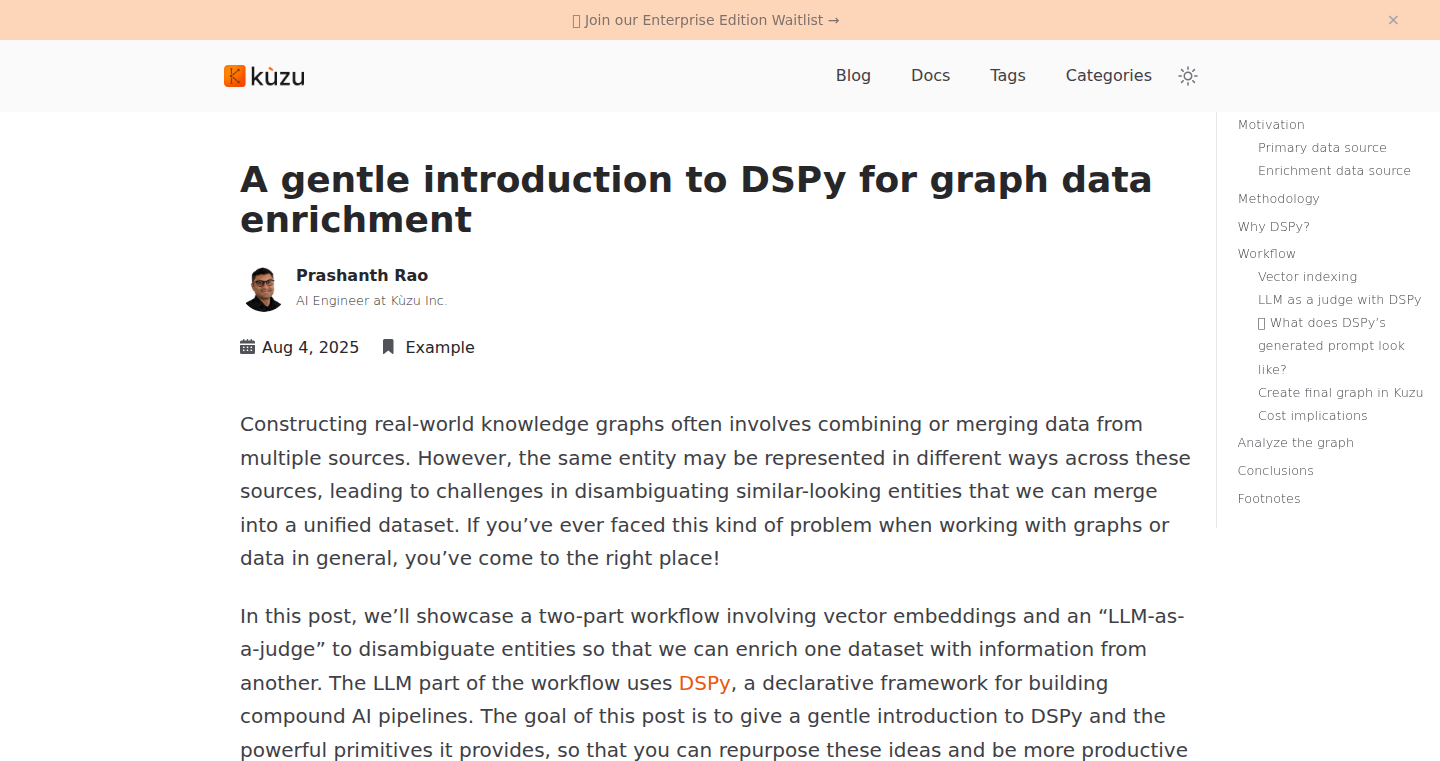

Highlight 1
The integration of vector search with LLMs provides an effective way to disambiguate data, ensuring high accuracy and relevance.
Highlight 2
The use of DSPy simplifies the process, allowing users to achieve complex results with less than 100 lines of code, making it highly efficient.
Highlight 3
The asynchronous nature of the pipeline improves performance, enabling the tool to scale well even with larger datasets.

Improvement 1
While the tool is efficient, some users may require more in-depth documentation or examples to help implement it in their specific use cases.
Improvement 2
The UI/UX of the associated web interface could be improved for users who are less familiar with coding, such as offering a more user-friendly interface for configuring the tool.
Improvement 3
Multi-language support would be beneficial for expanding the user base and allowing non-English-speaking users to take advantage of the tool.
Product Functionality
It would be useful to add a more comprehensive tutorial or use case examples to assist users in applying the tool to various types of datasets.
UI & UX
Improving the user interface with more visual representations or drag-and-drop features for users without coding experience would enhance accessibility.
SEO or Marketing
The blog post could benefit from more targeted SEO strategies, such as focusing on key terms like 'data enrichment' and 'LLM integration' to attract a broader audience.
MultiLanguage Support
Introducing multi-language support would help reach international users, expanding the tool's adoption in non-English-speaking regions.
- 1
What is DSPy and how does it help with data enrichment?
DSPy is a Python library that simplifies working with large language models and machine learning workflows. It helps to disambiguate and enrich datasets by processing and improving data quality through vector search and LLMs in a simple pipeline.
- 2
Is the code available for free?
Yes, the code is open-source and available for free on GitHub. You can access it at [GitHub repository link].
- 3
How scalable is this solution for large datasets?
The tool is designed to be highly scalable, running asynchronously, which makes it suitable for processing large datasets efficiently. The pipeline can be adjusted to handle growing data without compromising performance.
